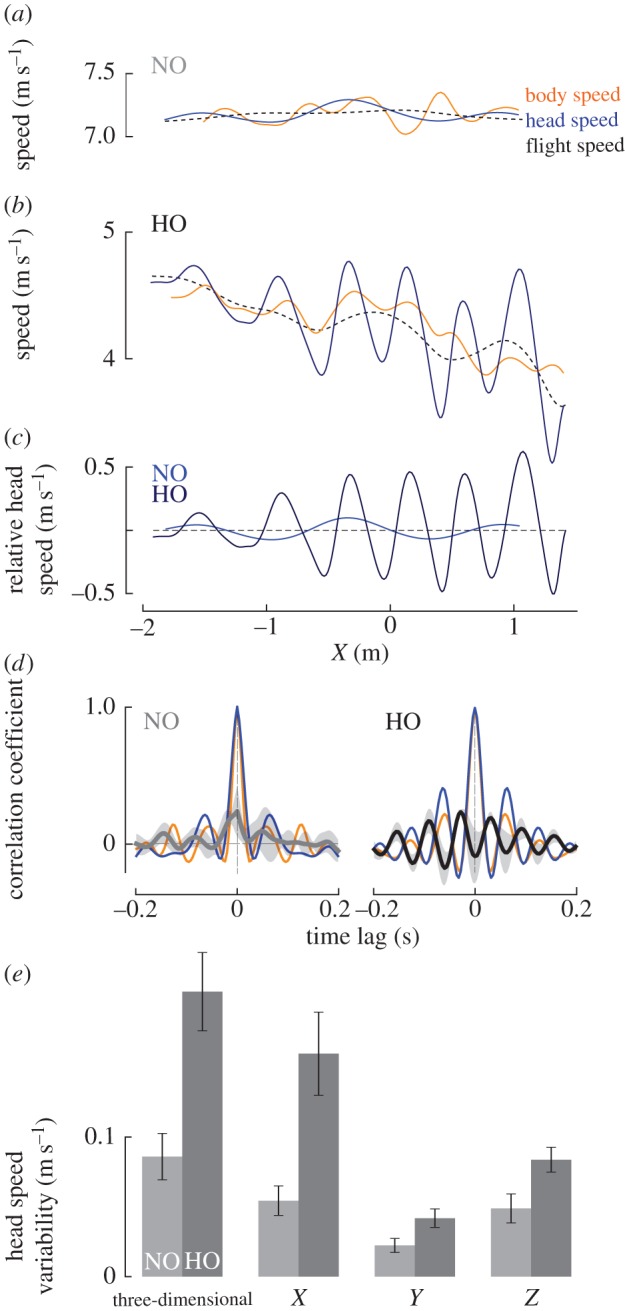Figure 4.

Pigeons bob their heads during obstacle flights, exhibiting larger head speed fluctuations in the presence of obstacles. (a,b) As illustrated by representative trials, head speed fluctuates more during HO flight compared with an NO flight (solid blue lines; light, NO; dark, HO flight). Head speed oscillates periodically, following a lower frequency trend determined by the pigeon's flight speed (dashed black lines). Body speed fluctuates at lower amplitudes and with no clear phase-relation to head speed. (c) Relative head speed, determined by subtracting flight speed from global head speed, oscillates more strongly during HO flight compared with NO flight, particularly near and within the HO forest (X > 0 m). (d) The mean ± s.d. (shaded areas) of individual mean cross-correlations of relative body speed with relative head speed for NO flights peaks at a time lag near 0 s (grey line, left panel), indicating synchronous relative head and body speed fluctuations when no obstacles are present. In contrast, during HO flights (right panel), fluctuations in relative body and head speeds are nearly counter-phase. The autocorrelations of the body and head (orange for body, blue for head) contain periodic local maxima and minima, indicating periodicity near the wingbeat frequency. (e) Head speed variability, based on the mean rectified relative head speed, is higher during HO flights than during NO flights for three-dimensional speed, as well as for individual velocity components along the three corridor axes (all p* < 0.006). Head speed fluctuations are particularly pronounced in the fore–aft and vertical directions.
